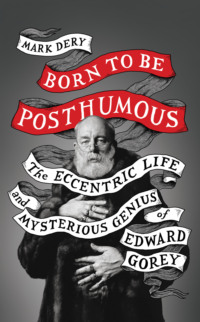Born to Be Posthumous: The Eccentric Life and Mysterious Genius of Edward Gorey

Полная версия
Born to Be Posthumous: The Eccentric Life and Mysterious Genius of Edward Gorey
Язык: Английский
Год издания: 2019
Добавлена:
Настройки чтения
Размер шрифта
Высота строк
Поля
Конец ознакомительного фрагмента
Купить и скачать всю книгу

